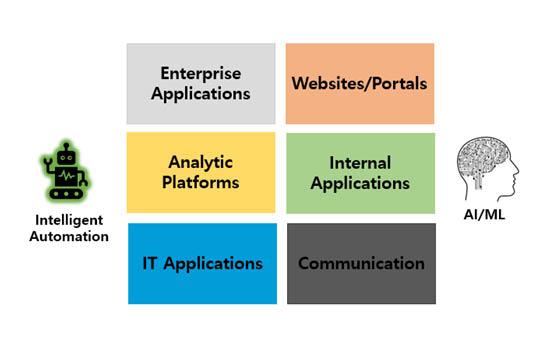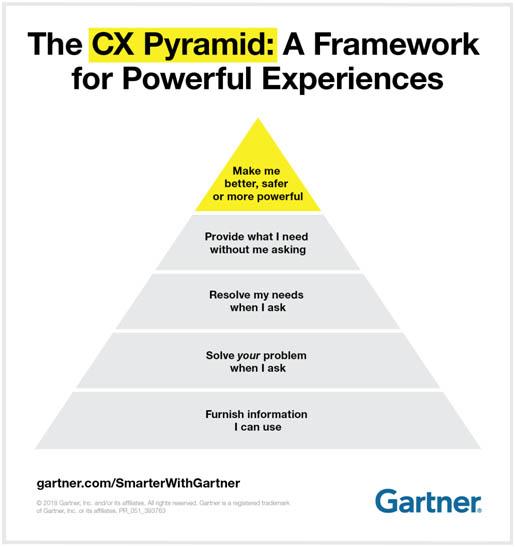As businesses are starting to reopen there have been some very important insights that have transformed a lot of things that we have thus far taken for granted. Speaking to our customers, partners and professional collaborators has given me some very crucial insights that are important for businesses to survive and thrive. I feel that technology can play a major role in putting those learnings and insights to work. It is a significant responsibility as much as it is an opportunity. I’d like to reflect on one of the technological touch points that have the potential to transform businesses- Contactless Transactions.
Technology plays a very vital role in enabling businesses to perform and scale contactless transactions. This is an opportunity for us to evolve and scale rapidly.
Digital Transformation is pivotal to this evolution and thankfully there are mature products and robust technology platforms that help us achieve this. With CMS IT’s experience of driving Digital Transformation programs across industries we think three key factors are critically important in evaluating your digital technology partner/solution.
- Modularity: Modularity is a very critical factor in building a digital transformation. Modularity enables you to shorten your go-live time as well as your efforts in building applications. The Industrial Revolution, if not anything has taught us the true importance of modularity.
In the auto industry, almost all the manufacturers make different parts at different places and then assemble them all. The delays in individual parts do not hamper or affect each other and supports innovative design. Programmers have been using modular design for a long time. The technology you choose should be completely modular to help you get the best out of your Digital Transformation quickly and efficiently.
Treating each block on its merits will always be easier than revamping the whole architecture. Intelligent Automation and Data Science/AI/ML can be applied across the application universe to improve usability, efficiency, and several other insights. Analytical insights can be utilized to identify the specific event’s impact on operations, products, and supply chains. Automation can be deployed across processes to define alternative pathways for people, goods, and services. The monolith approach to enterprise is quite old and a risky affair today. A modular approach allows you to be agile, scalable, easily adaptable, and upstream/downstream-compatible in terms of technology. As and when individual applications change bots can be reconfigured to work with the new ones. Data sets can be modified to cater to newer applications in the modular framework.
- Equilibrium: After having taken a modular approach, this is the second most important factor to truly drive business for your organization leveraging technology. I would not open my laptop at home for most of the things that I used to open it for a few years ago. I can do everything using my mobile. Well, you might be thinking that we already have mobile apps developed. But the question here is, why do you want to maintain two different silos of production. One for desktop and another for mobile. Why not embrace a solution which enables you to develop at once and it takes care of the rest? This is truly important because a lot of common folks like me prefer transacting on the mobile on the go and this would be a very crucial factor in growing business digitally. Equilibrium is the essence of the world we live in. Not just the consumer-facing applications – a lot of your key work transactions can be enabled to work across channels. The challenges of enabling omni channel have been overcome by technology- however, the design of solutions for omni channel is a huge opportunity. A well designed omni channel solution with the support of optimum automation can be transformational.
- Experience: Customer experience is more important than ever. Bad experiences result in unhappy customers who may look for other options. Experience, as they say, is king and therefore is to my mind the single most important factor in a digital transformation journey. When I say customers, I do so broadly. Your internal customers are included, and, in a sense, your suppliers are your customers too.
Take for instance, the insurance industry that has a lot of regulatory procedures that are a load on the customer. If the company has gone digital and the customer goes to your website and you have lengthy forms online that she/he needs to fill to get a policy. It would be better if there are options that make similar transactions minimal- this could be an example of experience as a differentiator. I remember the experience tilting my buy decision in insurance, groceries, and in endless other transactions.
A fabulous customer experience truly has the power to influence consumer minds and several organizations have done it already. A technology enabler that easily empowers you to give your customers an incredible experience is key!!
A robust digital platform can provide the data required for analytical insights into optimizing the efficiency of supply chains, identifying automation touch points, and minimizing physical contact touch points in the business. The experience layer is combined with the contextual data that is progressively improving the ability for us to respond to the user priorities. The final win for digital experience and indeed for automation and data science is the success of the transaction. More importantly, the resultant customer experience is a function of the transaction success and transaction experience. With a combination of intelligent automation, data science, and digital experience we have the tools to move the needle with internal and external stakeholders.



